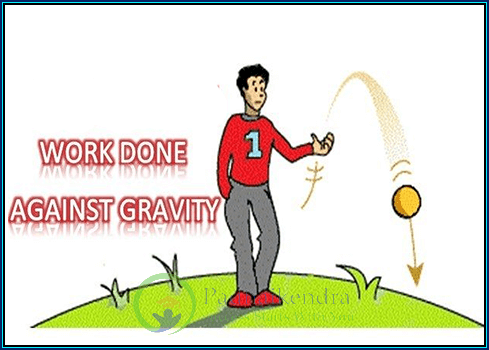Work Done against Gravity occurs when an object is lifted against the force of gravity. The work done against gravity is equal to the force of gravity acting on the object multiplied by the vertical distance that the object is lifted. This can be expressed mathematically as:
Work against gravity = (Force of gravity) X (Vertical distance lifted)
The force of gravity acting on an object can be calculated using the equation:
Force of gravity = (Mass) X (Acceleration due to gravity)
where the acceleration due to gravity is approximately 9.8 m/s² on the surface of the Earth.
For example, if a 11 kg object is lifted vertically to a height of 6 meters above the ground, the work done against gravity would be:
Work against gravity = (Force of gravity) X (Vertical distance lifted)
= (11 kg x 9.8 m/s²) X 6 m
= 646.8 J
This means that a force of 107.8 newtons (11 kg x 9.8 m/s²) was exerted over a distance of 6 meters to lift the object, resulting in 646.8 Joules of work done against gravity.
Work Done against Gravity FAQs
Work done against gravity refers to the amount of energy or work expended to lift an object against the force of gravity. It is the work required to move an object vertically upwards, overcoming the gravitational force acting on it.
The work done against gravity is calculated using the formula: Work = Force × Distance × cos(θ), where Force is the weight of the object (mg), Distance is the vertical displacement, and θ is the angle between the direction of force and the direction of displacement.
Work done against gravity is considered positive because the force applied is in the opposite direction of the displacement. When lifting an object vertically, the force exerted is upward, while the displacement is also upward. The angle between the force and displacement is 0 degrees, resulting in a positive work value.
Yes, work can be done against gravity when lowering an object, but it is negative. When an object is lowered, the force applied is in the downward direction, while the displacement is in the upward direction. The angle between the force and displacement is 180 degrees, resulting in a negative work value.
Yes, the weight of the object directly affects the work done against gravity. The greater the weight of the object, the larger the gravitational force acting on it. As a result, more work is required to lift the object vertically against the stronger gravitational force.
No, the work done against gravity is independent of the path taken. As long as the vertical displacement is the same, the work done against gravity will be the same. This is because the force of gravity acts vertically downward, and the displacement is also vertical.
Yes, the height or vertical distance over which an object is lifted affects the work done against gravity. The work done against gravity is directly proportional to the vertical displacement. The higher the object is lifted, the more work is done against gravity.
No, work done against gravity is just one factor to consider when lifting objects. Other factors, such as the force applied, the time taken, and the energy expended, also play a role. Additionally, factors like friction and air resistance may affect the overall work done and energy efficiency.
No, work cannot be done against gravity without vertical displacement. Work is defined as the product of force and displacement, and in the case of work done against gravity, both the force and the displacement must be in the vertical direction.
Examples of work done against gravity include lifting heavy objects, climbing stairs, raising a flag on a pole, and carrying groceries up a flight of stairs. In each case, energy is expended to overcome the force of gravity and move an object against its downward pull.





